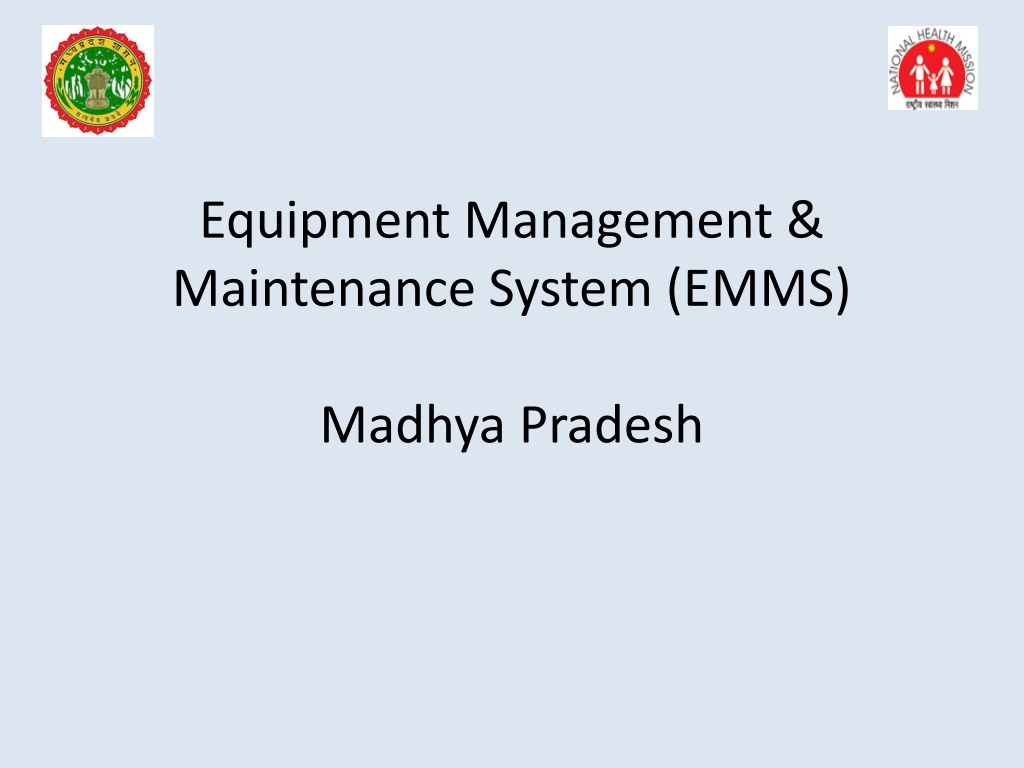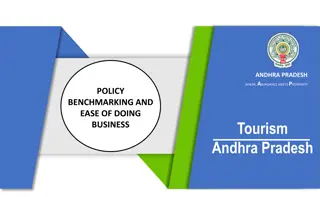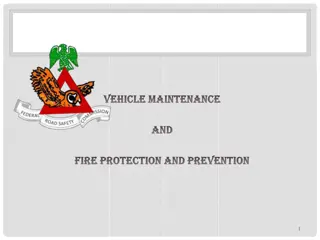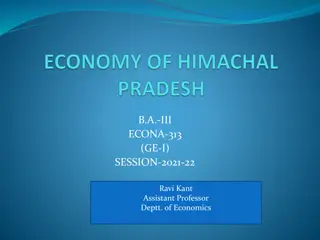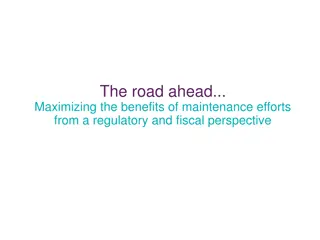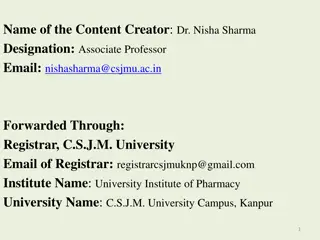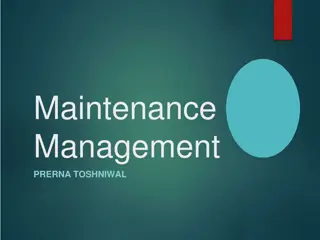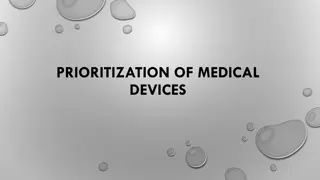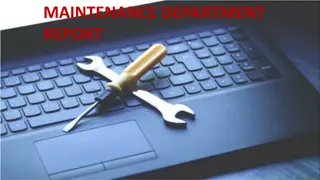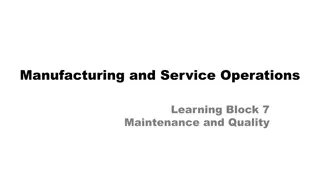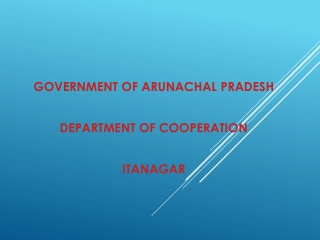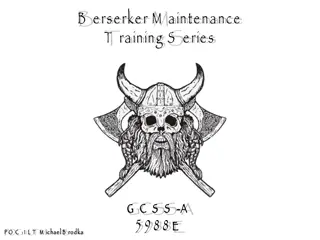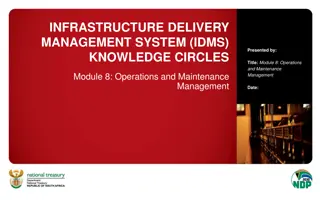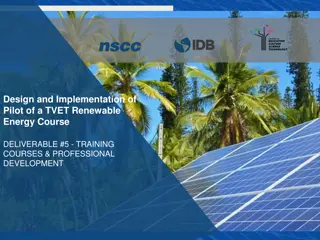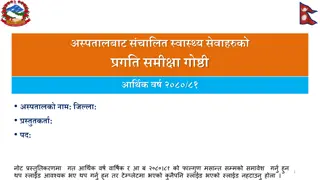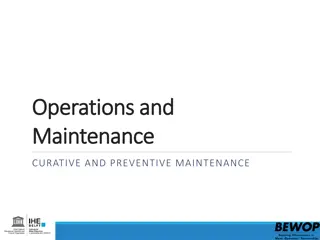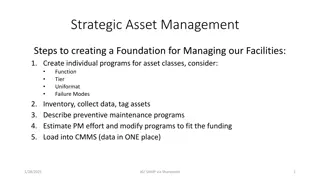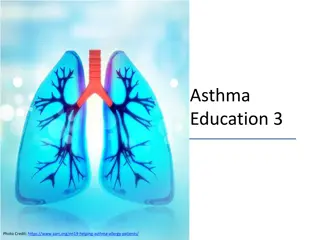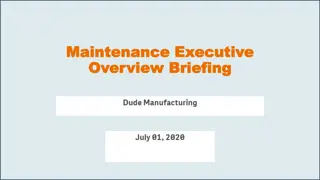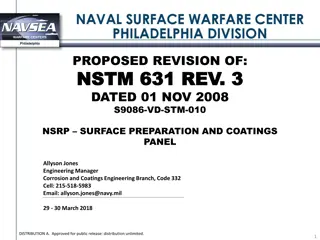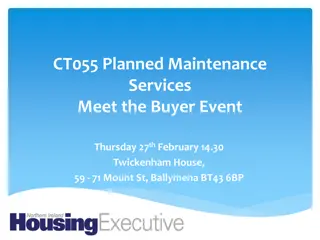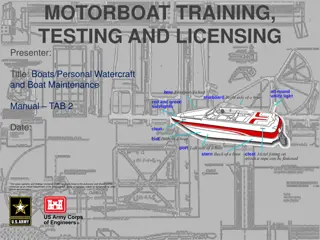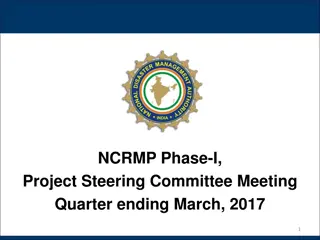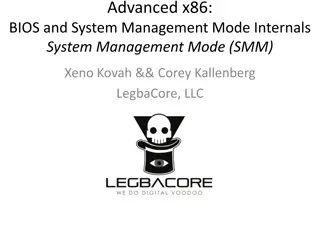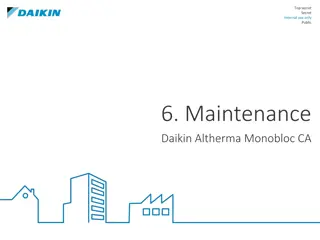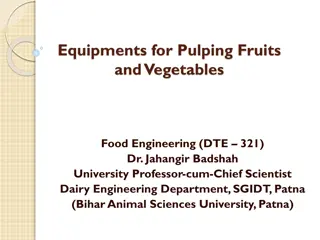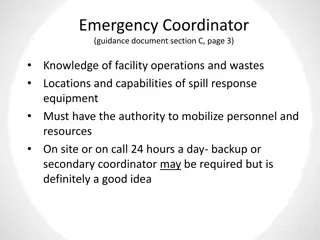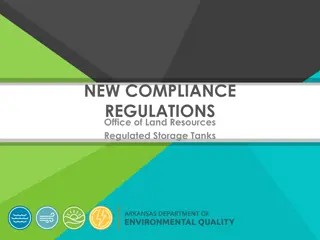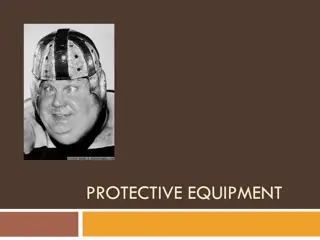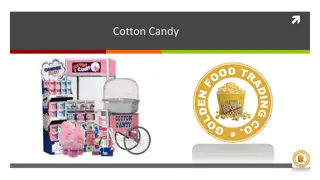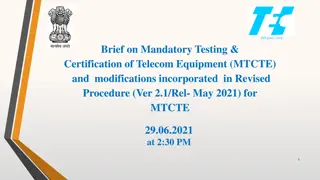Equipment Management & Maintenance System (EMMS) in Madhya Pradesh
EMMS in Madhya Pradesh is an end-to-end web-based solution focusing on equipment lifecycle management through demand estimation, procurement, inventory, preventive maintenance, and complaint management. It enhances transparency, automates penalty calculations, and involves various stakeholders for efficient equipment management.
Download Presentation

Please find below an Image/Link to download the presentation.
The content on the website is provided AS IS for your information and personal use only. It may not be sold, licensed, or shared on other websites without obtaining consent from the author. Download presentation by click this link. If you encounter any issues during the download, it is possible that the publisher has removed the file from their server.
E N D
Presentation Transcript
Equipment Management & Maintenance System (EMMS) Madhya Pradesh
What is EMMS An end to end web based solution with a life cycle approach of equipment. An online platform for: a) Monitoring of goods and services contracts b) High value contracts c) Auto penalty calculation as per the RFP clauses d) Maintaining process transparency for generating bills e) setting accountabilities of various stakeholders involved in equipment procurement and maintenance (storekeeper/facility in charge/OEM/service engineer/suppliers/vendors)
Stages captured in EMMS Demand estimation equipment procurement against central rate contracts Inventorisation Calibration Preventive maintenance Complaint management in case of equipment downtime Bill calculation of vendor/suppliers including penalties Payment approval using e-sign of DDOs Online payment through bank integration to vendor/supplier Decision Support System
Sequence of events PHASE I 1. Equipment Inventorisation offline followed by online after verification by facility in charge (T0 +90) June to Sept 2017 2. Calculation of NAV for each facility (T0+180) Oct to Dec 2017 3. Standardization of equipment list for NAV (simultaneous to step 1 & 2). 4. Commencement of Complaint module and exercising of penalty clauses w.r.t. Downtime (Jan 2018) 5. Commencement of Preventive Maintenance & Calibration module with penalties (June 2018) PHASE II 1. Demand estimation, offline, for each health facility (June to Aug 2018) 2. Gap analysis basis demand and inventory 3. Sealing of facility wise Annual demand 4. Commencement of Equipment procurement module PHASE III 1. Utility for FTO generation against payment approval with Biometric Aadhar based authentication 2. Bank integration for bill generation
Users Total users: 4000 Nodes: 51 CMHO+51 CS+313 CHC+ 1158 PHC Users profile: State level Management MPPHSCL CMHO Civil Surgeon Storekeeper (of DH/CHC/PHC) Accountant (of CMHO & CS) BMO (Block Medical Officer of CHC) MoIC ( Medical officer In Charge of PHCs) Equipment suppliers Service provider of CMC
Journey so far Maintenance Module Define the role and responsibilitie s and mapped accordingly in EMMS Training to users and monitor the output in Dashboards As per the agreement define the business logic in EMMS Inventory Verification by Facility In- charge Payment to vendor Inventory with Barcode Tender for L1
Conversion of RFP clauses into business logic Calculation of Net Asset Value NAV = ( Cost of selected equipment as per the inventory and not under warranty/ CMC/ AMC + Cost of already inventorised equipment whose warranty/ CMC/ AMC has expired in the previous quarter + cost of any additional equipment inventorised in the previous quarter ) ( Equipment gone for condemnation in previous quarter) Penalty calculation of Complaint management Equipment value INR 1 to 10,000 Penalty 300 rupees per day INR 10 K to 1 lakhs 500 rupees per day INR 1 lakh to 10 lakhs 1000 rupees per day INR > 10 lakhs 3000 rupees per day
Equipment Inventorisation Inventorisation of 51 District Hospitals, 332 CHC, 60 Civil Hospitals & 1158 PHC Total equipment count of state = 67805 (as on Oct 2018) Total types of equipment= 151Z
Calibration & Preventive Maintenance Each equipment has its cycle of PM & Calibration scheduled App based and system based alerts on scheduled dates per equipment to both service provider and facility in charge PMS done within schedule 27906 Calibration done within schedule 6574
Complaint management cycle Service enginee r has to reach site within 48 hours If facility in charge not satisfied then equipment enters penalty cycle. Complaint generatio n through desktop, IVRS and mobile app. Bar Code by service provide r Satisfaction report by Facility in charge within 3 days Complaint close with 7 days by service engineer Complai n closure
Average time to close the complaints 160.00 143.40 140.00 120.00 100.00 Average Days for complain closure by Facility Incharge 80.61 80.00 Average Days to complain closure by Vendor 60.00 48.43 40.00 38.67 22.77 33.79 29.29 25.26 21.26 20.00 8.34 14.16 13.37 9.02 7.94 6.46 6.10 3.58 0.00 0 Jan'18 Feb'18 Mar'18 Apr'18 May'18 Jun'18 Jul'18 Aug'18 Sep'18
Functional % Comparison Jan'18 - 37181 Equipments Oct'18 - 34823 Equipmetns 90 88.26 88 86 84 82 80 Functional % 77.05 78 76 74 72 70 Jan'18 Oct'18
Finance module for Maintenance Module Bill is generated automatically through EMMS on the basis of business logics decided in agreement between Department and service provider/vendor. Bills are paid by each authority using e sign directly through the bank i.e. no manual intervention in the whole process till payments.
Journey so far Procurement Module Implementation strategy to implement Procurement Module Budget is allocated to all DDOs as per the need and demand Purchase Order is generated by DDOs as and when required Rate Online Payment to suppliers contract is finalized from MPPHSCL Demand Analysis
Equipment Procurement to Pay (P2P) Procurem ent as per the annual drug plan and Budget allocation Equipme nt Receipt Certificat e by Consigne e On the basis of central Rate Contract Bill By 110 DDOs across the state Supplies at the consigne e location ERC Verificati on by Accounta nt Online Payment by DDO Verificati on by DDO
Demand estimation Life Cycle Gap analysis of Equipments to define Demand (Inventory Vs VED) Inventory creation by Vendor Optimum facility wise List of Vital/Essential/Desirable Reference IPHS Norms Rationalization against available post
Process Re-Engineering N o Activity Manual Procedure Automated Procedure 1 Purchase Order Manually Typing for details of items, consignee and terms and condition Generated automatically after filling rate contract and annual demand. 2 Inventory Manual record keeping of Equipments Automatically keeping inventory through bar codes . Inventory updation based on new procurement. 3 Installation and training of equipment Equipment were being unused due to lack of information of installation and training. User gets informed through prefilled masters as per tender conditions. 4 Warranty of equipments Lack of information w.r.t. warranty. & lack of communication gap with OEM . The complaint is directly routed to OEM in case equipment is in warranty.
Process Re-Engineering Cont.. No Activity Manual Procedure Automated Procedure 5 Annual Maintenance Contract Manually maintained. Routing of equipment coming out of warranty in service provider s list. 6 Complaints and calibration High dependence on OEM CMC by service provider. 7 Role based access Ambiguity in roles and responsibilities Role base access is mapped to each stakeholder. 8 Payment to suppliers Subjective and delay in payment. The Time Around Time (TAT) is considerably reduced.
Results Parameter Intervention Online inventory including newly procured and under warranty equipment. Result Total 66,000 equipment inventorised. Equipment inventorisation Outsource the maintenance of equipments to achieve 95% uptime Up time of Equipment 88.94 % uptime 11319 complaints lodged since Jan 2018. Online Complaint raising through a centralised call centre Complaint Redressal DDO wise bill generation and online payment provision. INR 2.8 CR online bill generation till now. Payments to Vendor
Challenges Faced G 1 a) Realistic data for Inventorisation including verification. b) Deciding roles c) HR and Skill gaps d) Work flow for contract monitoring e) Business logic for penalty calculation according to RFP f) Time synchronization between system go live and contract cycle
Challenges Faced G2 a) Mapping the tender conditions at the backend b) Equipment wise penalty calculations c) Differential payment strategy d) Developing a completely new utility of payment through e sign using Biometrics +aadhar based authentication with bank.
Functional % Comparison Jan'18 - 37181 Equipments Oct'18 - 34823 Equipmetns 90 88.26 88 86 84 82 80 Functional % 77.05 78 76 74 72 70 Jan'18 Oct'18
